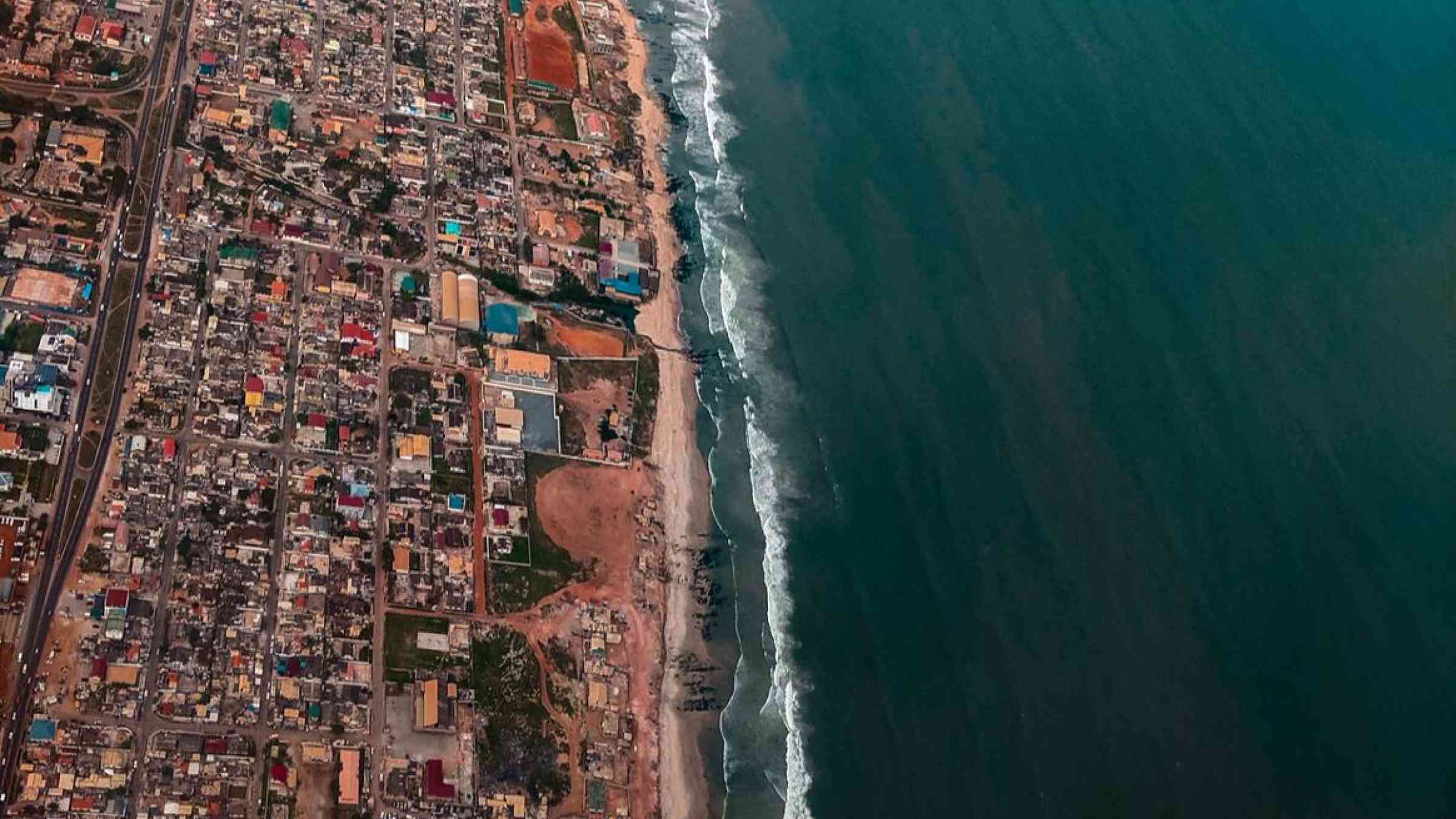Please help us improve PreventionWeb by taking this brief survey. Your input will allow us to better serve the needs of the DRR community.
Sea Level Rise may erode development in Africa

KwameBlack/Shutterstock
By Hope Mafaranga
Sea level rise and extreme weather associated with climate change are threats to human health, safety, food and water security, and socioeconomic development in Africa, climate change experts said in a new report.
“Climate change is having a growing impact on the African continent, hitting the most vulnerable hardest, and contributing to food insecurity, population displacement and stress on water resources. In recent months, we have seen devastating floods, an invasion of desert locusts and now face the looming specter of drought because of a La Niña events,” said Petteri Taalas, secretary-general of the World Meteorological Organization (WMO), when introducing the 2019–2020 “State of the Climate in Africa.”
Rising Sea Levels and Coastal Erosion
Sea level rise associated with climate change includes an increase in coastal erosion and saltwater intrusion in drinking, hygiene, and irrigation supplies.
Such phenomena pose a threat to Africa’s coastal regions, said Vera Songwe, United Nations (UN) under secretary-general and executive secretary of the Economic Commission for Africa, at the WMO event. Songwe said sea level increase exceeded 5 mm per year in the southwestern Indian Ocean along Africa’s east coast. The region’s island nations, including Madagascar and Mauritius, are particularly vulnerable.
It is Africa’s west coast, however, that is expected to see the biggest impact. Saint-Louis, in northern Senegal near the mouth of the Senegal River, has been identified by the UN as the city most threatened by rising sea levels in Africa. Saint-Louis stands no more than 4 meters above sea level, and coastal flooding has already forced schools, mosques, and homes to be abandoned. Saltwater intrusion has radically altered agricultural production around the mouth of the river, as well as compelled changes in freshwater and wetland fisheries in the region. A 2019 World Bank report estimated that coastal erosion costs the nation of Senegal more than half a billion dollars every year.
“About 56% of the coastlines in Benin, Côte d’Ivoire, Senegal, and Togo are eroding, and this is expected to worsen in the future.”
Sea level rise is forecast to radically alter economies and communities throughout West Africa. The same World Bank study that analyzed Saint-Louis estimated that damages from sea level rise cost Côte d’Ivoire nearly $2 billion in 2019—4.9% of the country’s gross domestic product. In Ghana, erosion has turned coastal fishing villages into islands. And according to a 100 Resilient Cities report, Lagos, Nigeria, a megacity of 14 million people, “is susceptible to damage from rising sea levels and coastal erosion, which have already led to a decline in water quality, the destruction of drainage infrastructure, and an increase in incidences of water and vector-borne disease.”
Africa is enduring “more than the average global sea level rise of 3 to 4 mm per year,” said Songwe. “The trend is a result of the coastal degradation and erosion in West Africa. About 56% of the coastlines in Benin, Côte d’Ivoire, Senegal, and Togo are eroding, and this is expected to worsen in the future.”
Josefa Leonel Correia Sacko, the commissioner for rural economy and agriculture at the African Union Commission, joined Petteri Taalas at the WMO event. Both called for more research and accurate weather projections to prevent or mitigate extreme weather events in the future.
“This will enable scientists to look at much finer detail the kinds of…extremes Africa could experience as our climate warms,” Sacko said.
Climate change experts advise a dual strategy involving both adaptation and mitigation policies to fight the threats of sea level rise in Africa. Adaptation measures include constructing coastal levees and nourishing beaches with sand and sediment. Mitigation policies focus on greater global commitment to climate change policies that would reduce sea level rise. These mitigation commitments include designated funds from regional and global institutions, nations, and initiatives.
Explore further
Please note: Content is displayed as last posted by a PreventionWeb community member or editor. The views expressed therein are not necessarily those of UNDRR, PreventionWeb, or its sponsors. See our terms of use
Is this page useful?
Yes No Report an issue on this pageThank you. If you have 2 minutes, we would benefit from additional feedback (link opens in a new window).